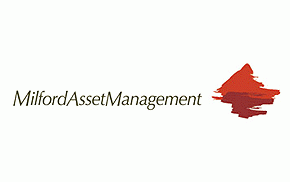
The latest data released for KiwiSaver performance as at June 30, 2013 is from Milford Asset Management. (Our previous story covering the March 31, 2013 returns can be found here.)
Without wanting to sound like a broken record, Milford continue to cement themselves as one of the pre-eminent managers in KiwiSaver.
Milford continue to perform exceptionally well over the long term and are naturally growing their funds under management (FUM) as a result.
Like many of the KiwiSaver scheme providers we have written about recently Milford were also caught by recent market volatility and the markets ongoing concerns about the US Federal Reserve tapering back its quatitative easing (QE) program and indications of a slow down in China’s economic growth rate. Other factors impacting returns are rising interest rates and investors realising profits after the strong market rises over the previous twelve to eighteen months.
Milford remains upbeat about the local economy and outline the following reasons to support their views.
- The Christchurch rebuild
- House price increases, particularly in Auckland
- A substantial increase in residential building activity
- Auckland’s rail and road expenditure programme
- Buoyant soft commodity prices, especially for dairy products
- Stronger net migration inflows
- Strong liquidity, households have $115.9 billion of bank deposits
- The Trade Me, Xero factor – a resurgence in entrepreneurial activity.
Milford retain their relatively positive outloook for the global economy also with signs of improvements in the US and Europe, although in China things are not going so well and this is having an impact on Australia.
The manager also notes a de-coupling of emerging and developed markets and the flow of money from the former to the later is occurring.
Relative to market indices despite difficult conditions Milford's three KiwiSaver funds have held up remarketably well and continue to increase the wealth of its investors.
During the quarter Milford's Conservative Fund increased their exposure to income assets at the expense of growth securities. Overall the manager remains upbeat about the global outlook. Also during the quarter, Milford reduced the exposure to the Milford Trans-Tasman Fund to reflect their expectation of a more difficult time ahead, in the short term at least, for Australia
While there is expected to be greater volatility in the short term, Milford notes that over the medium term they have a positive outlook for equities despite the immediate headwinds.t from falls in interest rates in Australia.
The Milford Balanced Fund has adopted a slightly more cautious approach to its investment strategy to take into account to expected short-term spike in volatility.
Longer term they still favour exposures to equities and are taking opportunities to reinvest some of their excess cash back into equities during dips in the market.
Readers should also be aware that Milford's Balanced Fund invests predominately into Milford's own in-house non KiwiSaver products. Traditionally, diversification across managers is seen as a must in order to reduce the overall risk in a portfolio.
I would be concerned if the Balanced Fund started to lag either the market or its underlying benchmarks and investors would also have to reassess whether this is in fact a prudent strategy.
Within the flagship Milford Active Growth Fund the manager has a reasonably high cash position (approximately 21%) and this has cushioned the fund from falling as far as the local and global equitiy benchmarks. The Australian market continues to do poorly as the economy struggles to get traction and move forward following a string of interest rate cuts by their central bank.
The one and five year return numbers (refer table below) are ahead of their respective benchmarks with returns of over 10% p.a. since inception.
The absolute return style Milford adopts means they have a relatively high degree of freedom in how they grow their investors wealth. This approach differs from some of the more main stream managers who are restricted by their mandates and general investment philosophy and processes.
Below is a table of the performance of the three Milford funds. The return data is before tax and after fees and is as published by the manager. (No adjustments have been made to take into account those additional fees which scheme providers may charge and which are not included in calculating the fund performance. We do make such adjustments, but they will not be included until the full benchmarking is published.)
|
Milford KiwiSaver Scheme (30 June 2013) |
1 year (p.a.) |
5 year (p.a.) |
Since inception (p.a.) |
| Conservative Fund | n/a | n/a | 10.6% |
| Balanced Fund | 20.4% | n/a | 11.2% |
| Active Growth Fund | 25.8% | 12.8% | 12.5% |
More detailed performance reporting can be found here ».
The table below outlines the assset allocation for each Milford fund as at 30 June 2013.
|
Milford KiwiSaver |
Cash/Other (%) |
NZ Bonds (%) |
Global Bonds (%) |
Property (%) |
Global Property (%) |
NZ & AU Shares (%) |
Global Shares (%) |
| Conservative | 18.0 | 52.0 | 4.0 | 26.0 | |||
| Active Growth | 24.3 | 4.2 | 66.8 | 4.7 |
|
Milford KiwiSaver |
Cash (%) |
Income Fund (%) |
Trans-Tasman Fund (%) |
Active Growth Fund (%) |
Global Shares (%) |
| Balanced | 6.9 | 44.7 | 13.1 | 11.6 | 23.7 |
We welcome your comments below. If you are not already registered, please register to comment.
Remember we welcome robust, respectful and insightful debate. We don't welcome abusive or defamatory comments and will de-register those repeatedly making such comments. Our current comment policy is here.